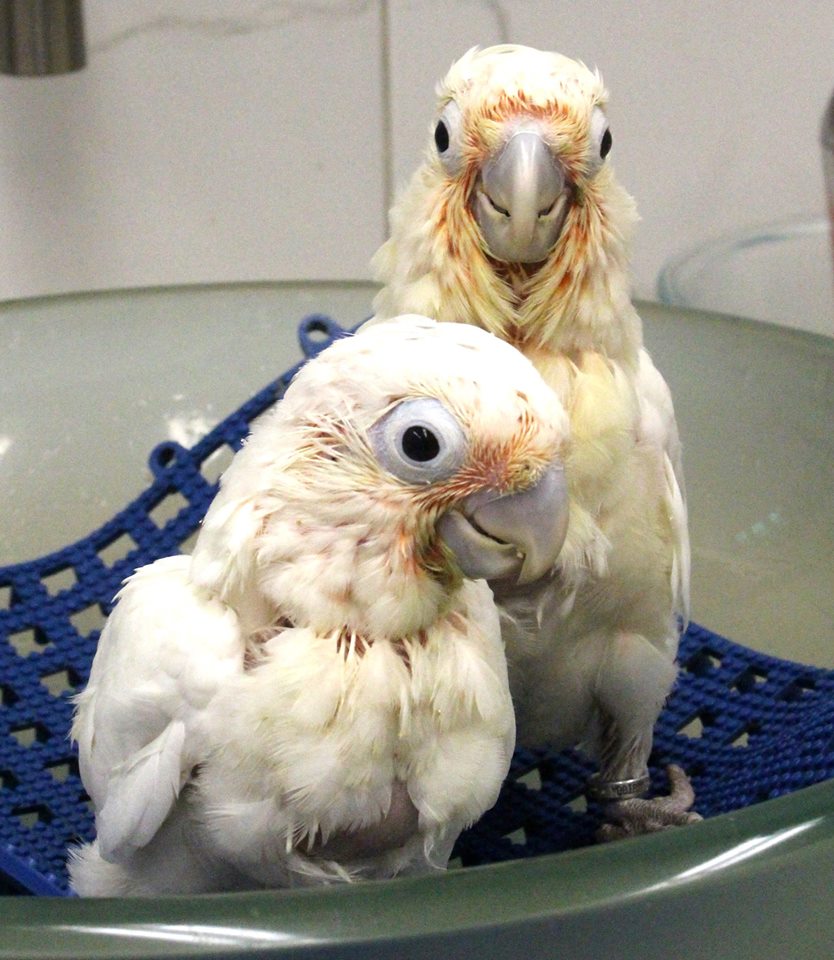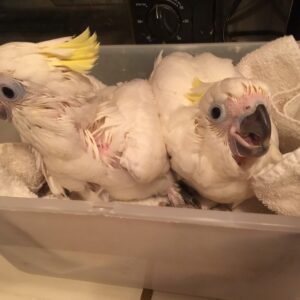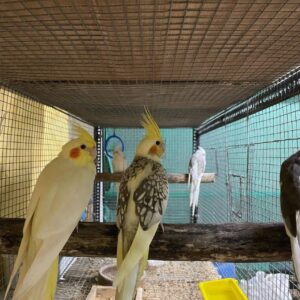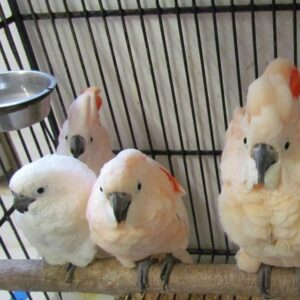Baby Goffin’s Cockatoo For Sale
Baby Goffin’s Cockatoo, the Tanimbar corella (Cacatua goffiniana) also known as Goffin’s cockatoo or the blushing cockatoo often have the peculiar habit of putting things on their backs, or tossing them over their heads. They will hop straight up and down and love to dance. Acrobatic tricks often become second nature to them. Buy baby Goffin’s Cockatoo parrots online.
Care and feeding of Baby Goffin’s Cockatoo For Sale
A cage of at least 20″ x 20″ is required unless the bird is to be let out for extended periods. Many birds can spend most of their time on a play pen or parrot perch. They eat a variety of seeds, nuts, fruits, and commercial pellets, as well as the same nutritional foods humans eat. The Rose-breasted Cockatoo should be fed a less oily diet (sunflower seeds and other oily seeds) than other cockatoos since they can develop fatty tumors known as lipomas.
Breeding/Reproduction
Because the cockatoos are threatened with extinction, successful breeding is helping to preserve the species and reduce the number of wild caught birds.
Breeding cockatoos can be difficult and it is in not recommended for a beginner. The best success in breeding cockatoos in captivity started with the greater sulphur-crested, lesser sulphur-crested, and the rose-breasted cockatoos, though several others are now also being breed successfully.
Some basics for breeding cockatoos include:
Pairing Cockatoos:
Pet cockatoos have a very difficult time getting used to a mate so are very hard to use for attempts at breeding. Establishing any harmonious cockatoo pair can be difficult. It is best to have several young birds together and let them pair naturally.
Sexing Cockatoos:
Most cockatoo species are easily sexed.
Breeding Environment:
The best environment for breeding cockatoos is accomplished in an aviary. Place the cockatoo’s square nesting box, or a round hollowed out tree trunk of the same approximate size, high in the aviary. On the bottom of the nest box, put a 4″ (10 cm) layer of soft bedding such as wood shavings.
The nesting box for a small cockatoo should be 10″-12″ (25-30 cm) wide x 23″-31″ (60-80 cm) high, with a hole size of 4″ (10-12 cm).
Egg Laying and Hatchlings:
The cockatoo female will lay between 2 to 3 eggs. Brooding, depending on which species, is between 25 to 30 days. The young are naked and blind when hatched and don’t open their eyes for several weeks. Hatchlings take between 60 and 100 days to become fully plumed and at that time they will begin to explore outside of the nest. However they will still be dependent for another two to three weeks before ready leave the nest for good.






